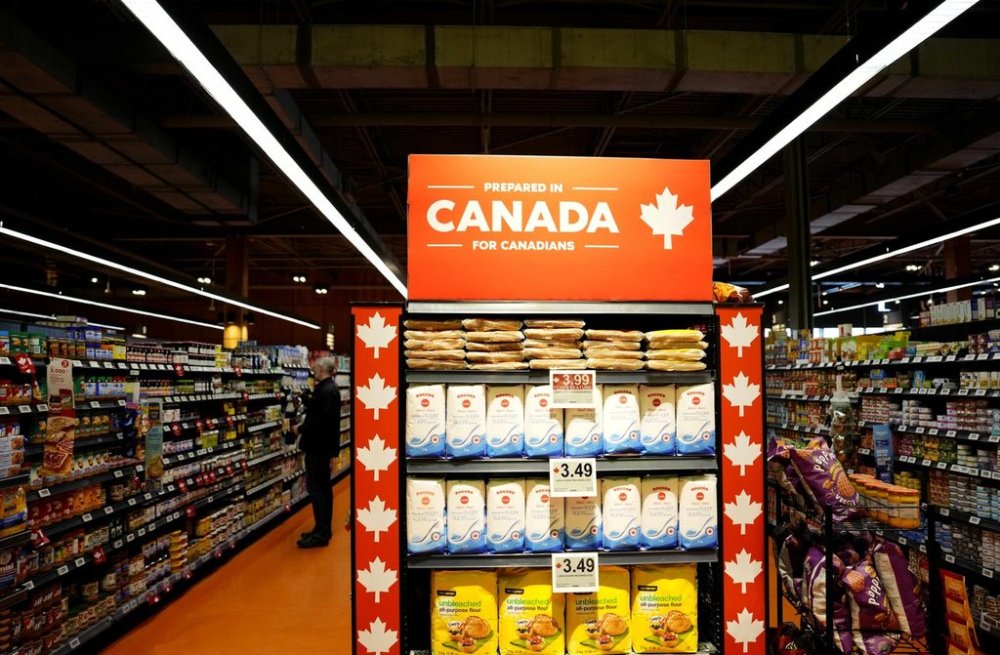Food inflation up in September despite end to counter-tariffs
Advertisement
Read this article for free:
or
Already have an account? Log in here »
To continue reading, please subscribe:
Monthly Digital Subscription
$0 for the first 4 weeks*
- Enjoy unlimited reading on winnipegfreepress.com
- Read the E-Edition, our digital replica newspaper
- Access News Break, our award-winning app
- Play interactive puzzles
*No charge for 4 weeks then price increases to the regular rate of $19.00 plus GST every four weeks. Offer available to new and qualified returning subscribers only. Cancel any time.
Monthly Digital Subscription
$4.75/week*
- Enjoy unlimited reading on winnipegfreepress.com
- Read the E-Edition, our digital replica newspaper
- Access News Break, our award-winning app
- Play interactive puzzles
*Billed as $19 plus GST every four weeks. Cancel any time.
To continue reading, please subscribe:
Add Free Press access to your Brandon Sun subscription for only an additional
$1 for the first 4 weeks*
*Your next subscription payment will increase by $1.00 and you will be charged $16.99 plus GST for four weeks. After four weeks, your payment will increase to $23.99 plus GST every four weeks.
Read unlimited articles for free today:
or
Already have an account? Log in here »
Canadian households are continuing to pay more at grocery stores as food inflation climbed four per cent in September compared with the same month last year.
Annual price hikes at the grocery store have largely trended higher since a recent low in April 2024, Statistics Canada said on Tuesday. Food inflation in August was up 3.5 per cent from a year ago.
The federal government ended 25 per cent counter-tariffs, which contributed to higher costs for food imports, in September as the two countries continue to negotiate on trade.

CIBC senior economist Andrew Grantham said high food inflation came as a surprise, given retaliatory tariffs on the U.S. were dropped in September.
“We’d actually expected that with the retaliatory tariffs being reduced, that maybe we could get a little bit of an ease in food price inflation,” Grantham said.
Michael von Massow, food economist at the University of Guelph, said the removal of counter-tariffs is having a varied impact on grocery prices.
For example, the price of oranges came down in September because the fruit moved faster through the supply chain. However, coffee is still seeing higher prices from tariffs because of its long shelf life.
“It comes in, it gets roasted, it gets packaged, it sits on a store shelf, and then it’s less perishable, so it will take more time for that product that was tariffed to move through the system,” von Massow said.
Coffee prices have also remained elevated globally as climate change and dry weather impact major coffee-producing countries.
Short supplies of beef and coffee are persistent factors fuelling higher prices, StatCan said.
Von Massow said beef prices added to food inflation as dry weather in the west made it harder for ranchers to carry cattle over the winter.
“Cows are the factory of beef production and if we don’t have as many cows, it takes a while,” he said.
Fresh vegetable prices were up 1.9 per cent annually in September after a decline in August, and sugar and confectionary costs also accelerated to an increase of 9.2 per cent compared to 5.8 per cent the previous month, the agency said.
“When it comes to grocery prices, we have seen that there are environmental factors that play into some of those, particularly fresh fruits, vegetables,” said Grantham. He suspected a weak loonie also contributed to higher grocery bills.
Annual inflation accelerated to 2.4 per cent last month, StatCan said. That’s a jump of half a percentage point from 1.9 per cent in August.
RBC Capital Markets analyst Irene Nattel said food inflation reached a 21-month high in September, and was up 27.8 per cent on a cumulative five-year basis.
She said food prices are likely to remain elevated for the rest of the year as grocers look for local suppliers and U.S. alternatives amid ongoing tariff tensions and relatively strong Buy Canadian sentiments.
Grocers swiftly pivoted to local suppliers earlier this year as the Buy Canadian movement gained steam in response to the U.S. tariff war.
Nattel said consumers are also expected to continue their hunt for value.
“Against this backdrop, we expect ongoing consumer trade-down to discount banners/channels and private label products with sustained promotional/competitive intensity,” she wrote.
Major grocers — Loblaw, Empire and Metro — reported their internal inflation measures remained lower than or generally in line with the fixed basket of StatCan’s inflation metrics during their second quarters.
Nattel said that’s “indicative of consumer trade-down to discount and private label to moderate impact of higher food prices.”
She expects a similar outcome from the grocers during the upcoming earnings.
This report by The Canadian Press was first published Oct. 21, 2025.






